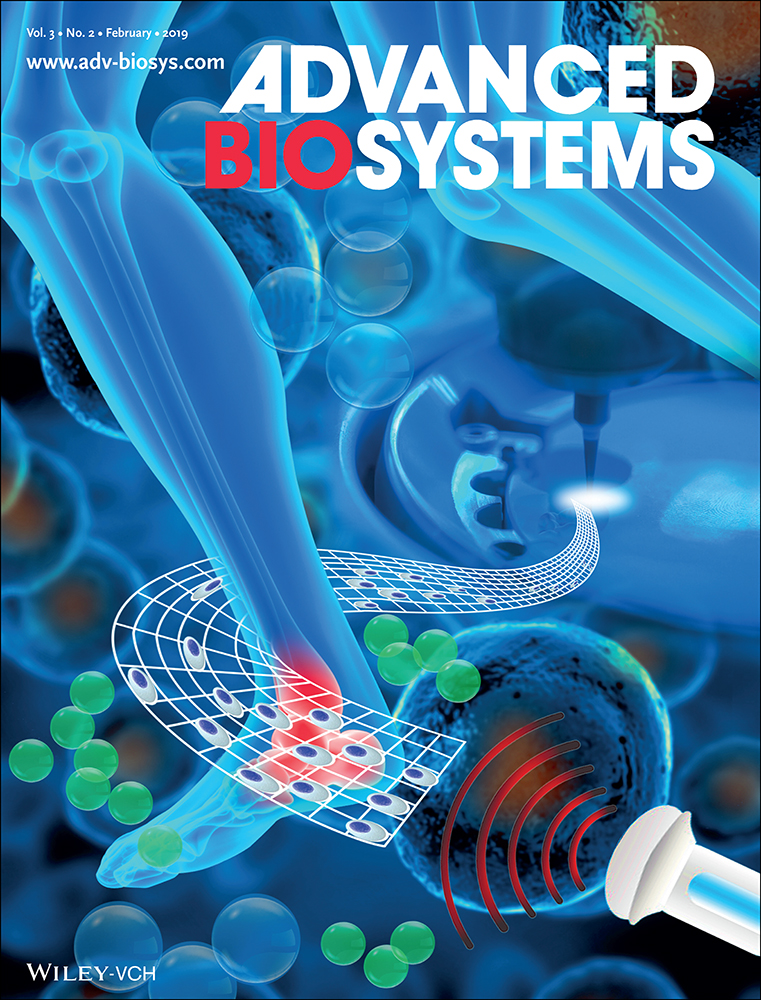Optogenetic Modulation and Reprogramming of Bacteriorhodopsin-Transfected Human Fibroblasts on Self-Assembled Fullerene C60 Nanosheets
Abstract
Fullerenes have unique biocompatibility and photoelectric properties and are candidate materials for biomedical applications. Several cell membrane proteins in nature such as bacteriorhodopsin also have photoelectric properties. Highly expressible bacteriorhodopsin (HEBR) is a novel light-sensitive opsin that has the potential to trigger neural activities through optogenetic modulation. Here, HEBR plasmids are delivered to human fibroblasts and the cells are exposed to C60 fullerene self-assembled 2D nanosheets. Results show that the above approach combined with light stimulation (3 s duration and three times per day) may promote reprogramming and differentiation of human fibroblasts into neural-like cells in 7 d without any neural induction medium. The special photoelectric properties of fullerenes as culture substrates and transfected HEBR on the cell membrane may provide a new optogenetic platform for regulating the location (C60 nanosheet) and time (frequency of light illumination) for human fibroblasts to become neural-like cells, and may be applied to improve neural regeneration in the future.
Conflict of Interest
The authors declare no conflict of interest.




